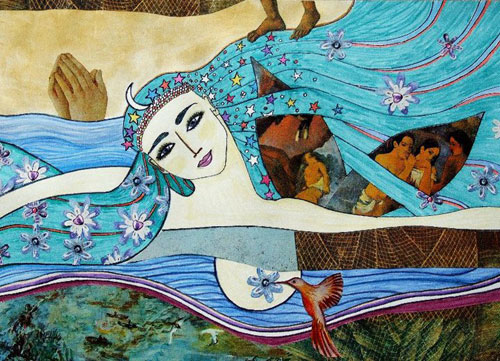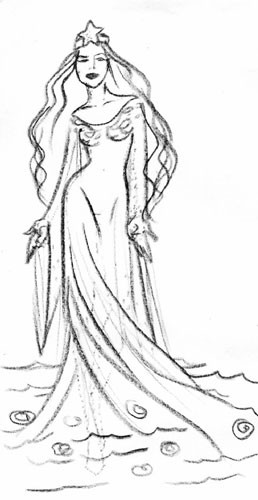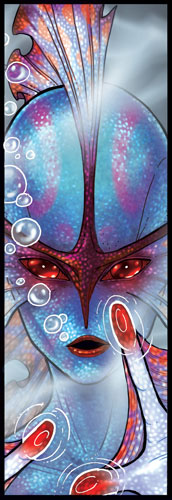
A few blogs ago, I promised myself and my readers to have a look at fantasy art outside the—largely—European tradition. One danger of doing this is that I don’t know an awful lot about some of the traditions I hope to look at. Another danger is that unlike the unicorns and elves, the dragons, mermaids and witches which populate European fairy tales and fantasy literature, some of the entities I will be looking at are being venerated in a religious context to this day. The borders between fantasy art and religious art are very fluid, and it is quite possible that some of what I show and write—or the fact that I do it in this context—may offend some of my readers.
I ask pardon in advance: my aim is to broaden the spectrum of the art I look at in this blog, not to provoke or patronize. Anything that might offend you, please put it down to ignorance, rather than disrespect. And please feel free to enlighten me in the comments!
A few weeks ago I was invited to a friend’s wedding, and treated to a gorgeous Caribbean style feast, so I was reminded of my promise and thought I’d make a start by looking at art inspired by the various Afro-American religions—Santería and Voodoo, as practiced in the Caribbean and the Bayou—and South American Candomblé and Umbanda, which I remember well from my teenage years spent in southern Brazil.
All these syncretic religions originate from African religious practices. African people were not only uprooted and forcefully resettled, they were also forcefully converted to Christianity—in most cases, Catholicism—and so they grafted their own deities on to Catholic saints.
The resulting religions and spiritual practices are alive and healthy to this day, and present a fascinating mixture of European and African influences. Although they are independent religious practices, they do share some of their main deities. The legacy of the Yoruba people is particularly prominent—a number of the main deities can be traced back to what is now Nigeria.
One of those deities is the Mother of Waters—known under many names: Yemanjá, Iemanjá or Janaína in Brazil, Yemaya or Madre Agua in Cuba, Yemalla or Yemoja in the US, LaSiren in Haiti. The Mami Wata—water spirits venerated in the Caribbean and Africa – are related to her.
In Yorùbá mythology, Wikipedia tells me, Yemoja is the mother of all saints, or orixas. She is the patron deity of women, especially pregnant women, and of the Ogun river. Originally a river spirit, it is said that when the Yoruba people crossed the ocean, she became the goddess of the sea.
In Brazil, Yemanjá is venerated as the Virgin Mary—Stella Maris, the Star of the Sea, as she is often called. She is typically depicted as a fairly light skinned woman with flowing dark hair and white dress. She is rather reminiscent of Tolkien’s Elves: she wears a star on her brow, and is often shown rising from the waves, arms open in a giving gesture, with a sickle moon in the sky to her left. Her thick flowing hair may turn into the sea waves.
Sometimes she has a fish tail and a mirror, like European images of sirens. She protects sailors, or perhaps drags them down to a watery death, much like the mermaids with whom she sometimes gets confused. One of her symbols is the kauri shell. Her colors are blue and white, and on her festival day, people bring candles, foodstuff and flowers down to the beaches as offerings for her – or send them out into the waves on little barges, decorated with her star.














All images are copyright the respective artists, and may not be reproduced without permission.











1 Comment